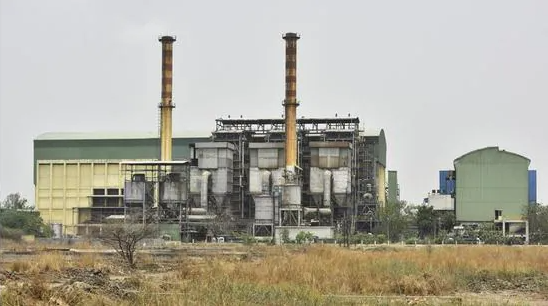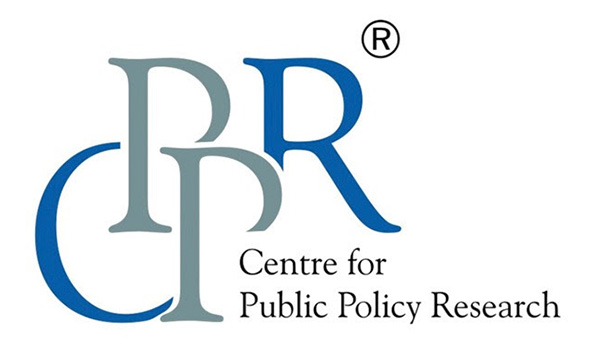Articles
Call for Application – Rapporteurs for Conference
August 12, 2022
Ep 32 Visible Women Invisible Equality – Part 1 | #PolicyBeyondPolitics
August 22, 2022The Failed Ideas of Waste to Energy Plants in India

Worldwide spurious debate on climate change issues and the rising temperatures, global cooling, pollution, contaminations of land, air, water, waterbodies, a decrease in the groundwater table, and hazardous chemicals became irreversible forces in the era of the globalised world.
The increase in environmental degradation causes catastrophic threats to health, safety, environment, and the destabilisation of natural resources by the modern production process and their waste generations are quite alarming. The piling of municipal solid waste (MSW) is of serious concern for every country and India is no exception to any of these issues.
The NITI Aayog Task Force Report observed in 2014 that “more than 80% is disposed of indiscriminately at dump yards in an unhygienic manner by the municipal authorities leading to problems of health and environmental degradation.” The report further noted that “the existing policies, programmes, and management structure do not adequately address the imminent challenge of managing this waste which is projected to be 165 million tonnes by 2031 and 436 million tonnes by 2050”.
Recently, the Union Government has set up Committee on “Circular Economy Action Plans” to devise a mechanism for holistic waste management. The national think-tank NITI Aayog had constituted 11 committees covering major waste-generating segments such as 1. Li-ion batteries; 2. E-waste; 3. Toxic and hazardous industrial waste; 4. Scrap metal (ferrous and non-ferrous); 5. Tyre and Rubber; 6. End of Life Vehicles; 7. Gypsum, 8. Used Oil, 9. Municipal solid waste, 10. Solar Panels, and 11. Agriculture Waste).
The costs imposed by variants of pollution and its effects on people, especially the vulnerable sections including children, women, and the elderly were most dangerous and resulted in the annual loss of millions of lives. According to World Health Organization (WHO), 22 types of diseases can be prevented/ controlled by improving the MSW management system. However, the attention paid to the issues is inadequate.
Against this background, it would be pertinent to look into the status and initiatives of waste-to-energy (WTE) plants in India. We are at the crossroad with sustainable development initiatives across sectors. The context of “waste is wealth”, “waste to wealth”, “waste to energy”, wealth out waste, resource recovery from waste, etc. were often loosely used in theory, policy, and practices.
Noted urban economist Isher Judge Ahluwalia and Utkarsh Patel (ICRIER, 2018) said a structural challenge is plugging with the “efficient conversion of waste to energy depends crucially on whether the waste is of sufficiently high calorific value, and India’s municipal solid waste because of its high biodegradable content and also high recycling falls much short of the threshold calorific value.”
According to the Annual Report of the Central Pollution Control Board (CPCB) 2020-21 (the latest available), the quantum of solid waste unaccounted for is a quarter (25.8%) of the entire pile of solid waste generated in the country (39,010 tonnes per day). These unaccounted solid wastes were most dangerous to the people, safety, and the environment because it’s often burned on the streets openly every day.
The total municipal solid waste generated in the country is 1.50 lakhs tonnes per day, out of which 1.46 lakhs or 96.8% of solid waste were collected from different sources daily; out of collected waste, only 47% of solid waste (70,973 tonnes per day) are treated or processed for further to reuse and reduce the contaminations. About 27.08% of solid waste was landfilled (40,863 tonnes per day).
The plastic waste generation in India was 34.69 lakh tonnes every year, of which only 45% of plastic waste was recycled in the country across 20 states (15.62 lakhs tonnes per year). A total of 37% of plastic wastes were generated in just three States -Maharashtra (13%), Tamil Nadu (12%) & Gujarat (12%).
Further, there was a total of 69,308 hazardous waste generating units in the country and about 8.78 million tonnes of hazardous waste generated during 2019-20. Around 50.67% of hazardous waste was generated in just 3 states – Gujarat (28.30%), Maharashtra (11.38%), and Tamil Nadu (10.99%). How much of this waste was recycled is not known. While the e-waste generated in 2019-20 was 10.14 lakh tonnes, of which only 29% or 2.96 lakh tonnes of e-waste were recycled in the country across 28 States.
Importantly, still the municipal solid waste generated in the country is not fully disposed with scientific methods for zero-waste system, including waste to energy. Some of the core issues with waste management in India are present at the foundational level since most stakeholders, especially the state governments and local bodies, are heavily focused on the collection, transportation, landfilling, or dumping or burning on streets openly instead of finding scientific solutions with institutional networks at a decentralised method with community involvements.
The Union Ministry of Environment, Forest & Climate Change had notified the PWM Rules, 2016, as amended in 2018 which emphasised that “non-recyclable be used for energy recovery from waste i.e. conversion of waste materials into usable heat, electricity or fuel through a variety of process including combustion, gasification, pyralization, co-processing and landfill gas recovery”.
According to the CPCB Annual Report (2017-18), “non-recyclable plastic mixed with Municipal solid waste shall be used as a feedstock for the boiler in the WTE plant which generates electricity. The WTE Project has two parts – first, the Refused Derived Fuel Plant (including pre-processing section) and second, the Power Plant. Refused Derived Fuel Plant takes MSW as input and produces Refuse Derived Fuel (RDF) as output. Approximately 6000MT/day plastic waste is being used for waste to energy and oil production.”
The history of waste to energy (WTE) plants in India is quite interesting but the trend is not encouraging at all even after experience of more than three decades. The cost of energy generated from waste was found to be very high (more than 50%) compared to others. Also, the cost of maintenance and operation was said to be very high which is not sustainable in the waste to energy plants.
At present, there are 12 “Wastes to Energy plants” operational in the country as per the report of CPCB (2021). All these are power plants. Several (7 plants) were closed in the past due to failure to upgradation of technologies to maintain the pollution level at prescribed norms. Three plants were found to be non-complied and show cause Notice has been issued to them. There are dozens of court cases against these plants for non-compliance with pollution norms.
The most controversial WTE plant is Timarpur Waste to Energy Plant, Okhla in Delhi due to non-compliance to directions of NGT and pollution complaints from the local public for several years. This was the first plant established in the country in 1987. The expansion plant was stopped in 2019 due to complaints from the local public about the pollution of dioxins and furans exceeding permissible limits.
However, the concept of waste to energy plants was enlarged much more than the conventional models. The Union Ministry implemented the following schemes to support states to undertake waste to energy generations: National Biogas and Manure Management Programme (NBMMP) to 2021, Biogas Development and Training Centres (BDTCs), and Programme on Energy from Urban, Industrial, Agricultural Wastes/ Residues and Municipal Solid Waste.
The Union Ministry of New and Renewable Energy reported to the Parliament (25.07.2019), that total of 317.03 MW of energy generated from 186 waste to energy plants in the country: 92 power plants with 249.73 MW, 78 Biogas plants with 55.46 MW, and 16 Bio CNG plants with 11.84 MW. As on 31.08.2020, total waste to energy plants increased to 216 with a total installed capacity of 370.45 MW.
Further, there were a total of 201 waste-to-energy plants in the country with a total installed capacity of 330.93 MW energy, which includes “generation of Biogas, BioCNG, and Power” (as on 31.12.2020). Out of which, total power generation plants were 96 (48%), Bio CNG plants were 22 (11%) and Biogas plants were 83 (41%). Only a few states have undertaken all three types of waste to energy plants.
As on 28.02.2021, the total capacity of 299.94 MW of Waste to Energy plants (exclusive of cogeneration projects) for electricity generation has been installed in the country. The above numbers are approved installed capacities; the actual status of plants operation and energy generation performance would vary but those details are not available to evaluate and draw conclusions.
According to Indian Biogas Association’s Thought Paper (2017), “India has been promoting biogas technology for the past three decades but has been unsuccessful despite several favourable environmental and sociological conditions.” The structural challenges faced by states and local bodies with waste to energy plants include grid connection with energy generated from waste for streetlight, etc. Often local bodies in urban areas have established waste to energy plants without concurrence of electricity department for gird connections.
The efficiency and full capacity operations of waste to energy plants are yet to be fully evaluated against the objectives and targeted achievements both in terms of physical and financial performance. Also, the technologies to absorb maximum waste to convert into wealth or energy are not yet available on a sustainable model and at affordable prices except few pilot and model plants, some of them are under PPP mode.
Therefore, before mooting for implementation of the Circular Economy Action Plans, it would be better to review comprehensively, sector-wise, all the existing schemes and programmes to firm up sound ideas of ground realities to ensure clean, green, and ease of living for all sections of the society.
Featured Image Source: Hindustan Times
Views expressed by the author are personal and need not reflect or represent the views of Centre for Public Policy Research.
Chandrasekaran Balakrishnan is Research Fellow (Urban Eco-system and Skill Development) with CPPR. His areas of research interest are economics of education, vocational education and skills development, economic reforms, liberal vision for India, water management, regional development, and city development. Chandrasekaran has an MA in Economics (University of Madras) and an MPhil in Social Sciences (Devi Ahilya Vishwavidyalaya University, Indore).

